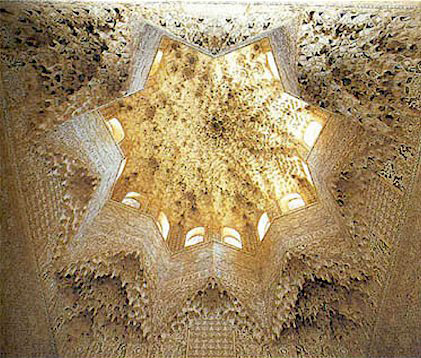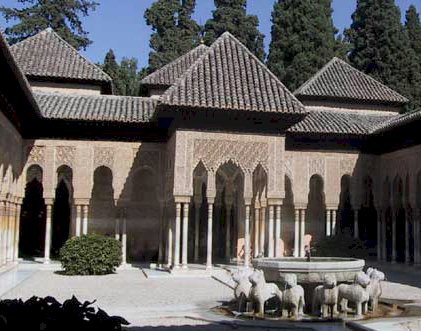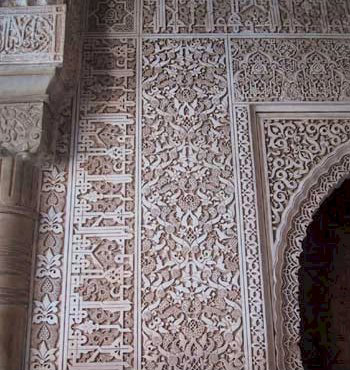Alhambra Palace and the River of Paradise

6953



The palace is an architectural masterpiece in every term. The composition of courts, gardens and water expressed the Muslim views of paradise and its eternality rewarding those who strive to reach it. One cannot discuss Muslim Spain without referring to the famous Alhambra Palace in Granada.
Its origins are still under debate as most scholars dated it to 13th century Granada, but there are indications which suggest it was first built in the 11th century (see Bargebuhr, 1968) (endnote 6), a significant time for both Muslim and European architecture.
The palace complex briefly consists of series of apartments, halls and courts organised in a delightful interconnected setting of hierarchy. The palace is an architectural masterpiece in every term. The successions of spaces are clearly defined by boundaries and each space contains identical features enhancing its identity as well as its function.
The visual effect reaches its peak through careful combinations of colour, light and pattern. The structure cleverly dematrialised by continuous work of stucco, muqarnas and faience covering the entire walls, floors and ceilings. The composition of courts, gardens and water meantime expressed the Muslim views of paradise and its eternality rewarding those who strive to reach it.
The honey juice is provided (symbolised) by the honey comb vault of the Hall of the Abencerages representing the world most fascinating vault. Here the interlocking of small squinches of lozenge shapes which project from the walls produced a cell very alike to the honeycomb organised in an eight pointed star. The drum of the star carries 16 windows two for each side of the star allowing enormous amount of light in to dazzle the eye.
 |
| Figure 1. Hall of the Abencerages (Alhambra) showing the Honey comb dome. |
The rivers of paradise are represented by the four streams, which run from the central fountain of the Court of Lions to supply the rest of numerous springs of the palace. The Pool of the Court of Myrtle is another "river" extending to the eastern side of the Palace. The golden stucco and calligraphic ornament covering the walls as they appear in the hall of Ambassadors may refer to golden jewellery and silky dresses the believer is promised (for more please consult Grabar, 1978).
The impact of Alhambra in disseminating Muslim Moorish style was substantial. Rich and wealthy Europeans who heard about or visited it could not resist the idea of reproducing elements or parts of it in their own buildings as happened to Owen Jones (1809-1874). His fascination with Muslim architecture in general and Alhambra's court of Lion in particular was behind his creation of "Alhambra court: at the Crystal Palace at Sydenham (Darby, 1974). The Alhambra style of ornamental and internal decoration invaded most European houses especially in Victorian England. The position of Al-Hambra in the European mind can be demonstrated in the writing of Victor Hugo in his "Les Orientales".
 |
| Figure 2. The central fountain of the Court of Lions |
 |
| Figure 3. No wall paper here! Alhambra interior walls carved with verses from the holy Quran. Colors have faded away.Summarised extracts from a full article: A review on Architecture in Muslim Spain and North Africa (756-1500AD) by Rabah Saoud )( Source: Muslim Heritage ) Advertisement Al Hambra: Guided Tours | Virtual Tour | Photos |
Topics: Al-Andalus, Alhambra Palace, Granada, Islamic Art And Architecture, Islamic Golden Age, Muslim Spain, Travel
Views: 6953
Related Suggestions
In accordance with Title 17 U.S.C. Section 107, and such (and all) material on this site is distributed without profit to those who have expressed a prior interest in receiving the included information for research and educational purposes.














